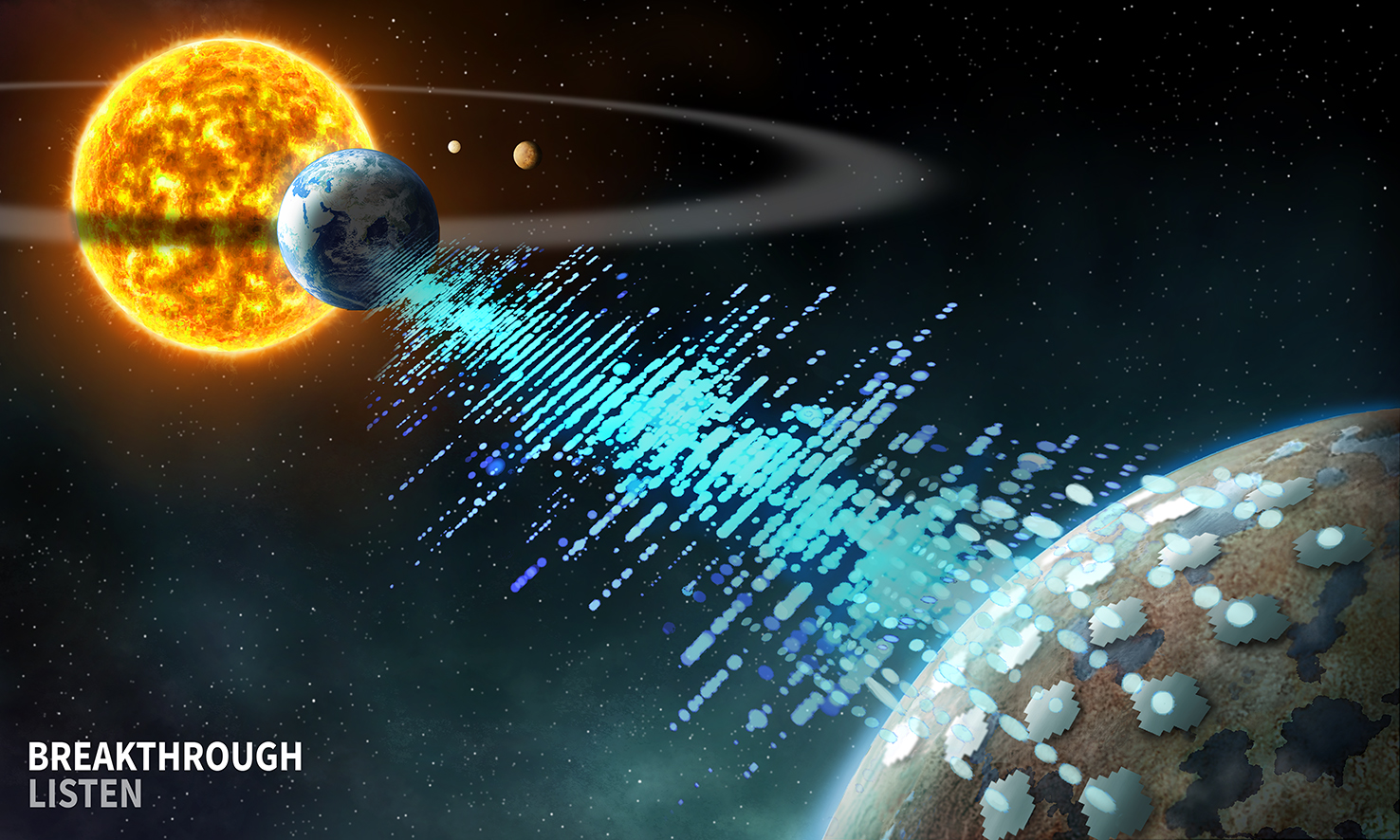Radio Observations of Transiting Exoplanet Systems
As we attempt to answer the question, “are we alone in the universe?”, there are many places to search. Although life might not necessarily arise in environments similar to Earth, Earth-like exoplanets are nevertheless good targets to look for extraterrestrial intelligence. The most recent search for these worlds has been led by the Transiting Exoplanet Survey Satellite (TESS), a space telescope specifically designed with the intention of finding Earth-like planets orbiting nearby stars. TESS finds planets by watching for when they cross in front of their host star and block a fraction of that star’s light — events known as transits. The corresponding difference in brightness depends on how large the planet is compared to its star, and for planets like Earth, this is a tiny fraction. Any star for which TESS observes a transit is cataloged in the TESS Targets of Interest (TOI) catalog.
In the case that a planet does host an intelligent civilization that is at least as technologically advanced as ourselves, then they might be detectable from the activity of their radio communication networks — one type of “technological signature”. A collaboration with the TESS mission has enabled Breakthrough Listen (BL) to conduct a targeted search of TOIs for technosignatures. Using the Green Bank Telescope, BL has observed TOIs and collected data with receivers sensitive to signals in the 1-11 GHz frequency range.
What makes searching TOIs so interesting is that they are not only likely planet hosts, but because observing a star with a transiting planet can lead to a higher likelihood of observing technosignatures from that system. In planetary systems, planets typically orbit uniformly around their star in a disk known as the “ecliptic”. A consequence of this is that in order to be able to watch a planet cross in front of its star, we must be viewing that system edge-on so that our line-of-sight is aligned with their ecliptic. What this means is that Earth is aligned with the ecliptic of every star that TESS has observed a transit for. If an extraterrestrial intelligence (ETI) were aware that its presence is most easily detected by those that can watch their transit, and wanted to make their presence known, they might intentionally beam transmissions (“beacons”) along their ecliptic so that whoever is watching their transit might also pick up their beacon.

Artist’s impression (Danielle Futselaar / Breakthrough Listen) of an exoplanet messaging Earth after seeing it transit the Sun. In a reversal of this geometry, a planet might choose to send signals along its own ecliptic, particularly in the direction opposite to its host star. This could attract the attention of anyone who might be monitoring during planetary transits.
In the summer of 2020, I was an intern at the Berkeley SETI Research Center for Breakthrough Listen. For my project, I worked on adding Google Cloud environment compatibility to the existing data processing pipeline. This allowed me to perform the first BL data analysis that utilized cloud-based computing. I conducted a search for technosignatures in 28 BL observations of TOIs, listening for radio communication networks active within the 1-11 GHz frequency range. We found no technosignatures, but this work has enabled us to put one of the most stringent constraints to date on the presence of technosignatures across such a wide range of radio frequencies.
More details about the analysis can be found in this paper, which is accepted for publication in the Astronomical Journal. The data used in this analysis is available on the Breakthrough Listen open data archive by searching for the target names listed in Table 5 of the paper. This analysis made use of the blimpy and turboSETI software, which are also publicly available.
